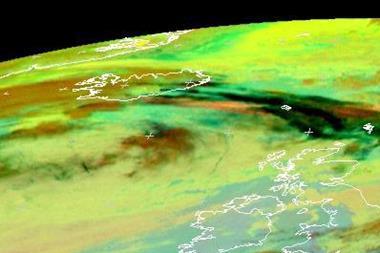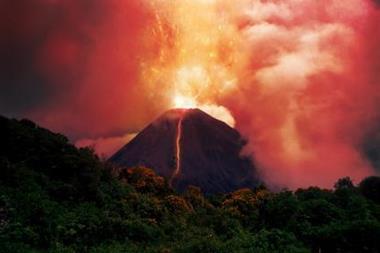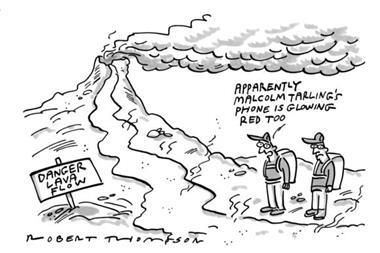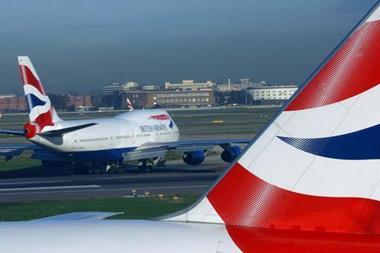While volcanic ash halted air travel across Europe, anger boiled over among travellers and businesses, as some insurers avoided paying out on policies. Others paid up rather than take the customer relations hit. Demand is now rising for volcano-friendly products, but will customers be willing to pay for them?
On 14 April, airport tannoy announcers across Europe delivered similar doleful messages as ash drifted towards the continent from an Icelandic volcano eruption. “Ladies and gentlemen, we are sorry to announce that due to volcanic ash all flights have been cancelled.”
It was the cue for thousands of stranded passengers to panic; businesses to be left fuming that their deliveries wouldn’t be made; and airlines to seethe at the loss of millions of pounds. But wait a minute – they bought insurance so should be covered, right? Well, not quite.
Not since World War II has airspace across Europe come to such a dramatic standstill. And no one saw the ash cloud from Iceland's Eyjafjallajökull volcano coming, not least the insurers. Over the past week, they have faced a barrage of criticism, with accusations that they were too slow to react and public fury at the perception they are hiding behind an ‘Act of God’ clause.
As planes sat grounded at airports for up to a week, costs began to spiral. There were two areas for concern: travel insurance for stranded holidaymakers, and the potential for commercial insurance policies to kick in. The two were very different stories.
The cost of goodwill
Standard travel policies wouldn’t cover this type of unusual event, but some of the largest insurers, including Aviva, Fortis and Chartis, broke the barriers and began extending cover and offering goodwill payments to holidaymakers stranded abroad after their travel providers or airlines refused to meet their costs. The ABI has yet to put a figure on this, saying it is too early to estimate. But best guesses are that it could be anywhere between seven and eight figures.
On the commercial side, business interruption policies would not cover firms that suffered financial loss because of the ban on flights, unless there was material damage as a result of the ash cloud. That included business operations of airlines and airports, according to Munich Re.
The reinsurer said business-interruption claims arising from airfreight shipments failing to reach their destination were expected to be extremely limited because of the material damage clause, and other claims related to areas such as agriculture or property damage caused by corrosion or dust deposits were also not expected to go through.
The ABI believes that insurers did not underestimate the costs of the volcano cloud. It argued that insurers could not have estimated the cost of something that hasn’t happened before. “I think it’s a case of it being not something anyone thought would happen,” an ABI spokesman says. But now it has, will policies change? Is this a new insurable risk?
The ABI says quite possibly – but it wouldn’t be cheap. “If you want to extend cover of insurance polices, then with that comes extending the cost and you have to ask: what would people be willing to pay for their travel insurance? It’s a cost thing. You can have a policy that will cover for absolutely everything but with that: a, how do you price that, and b, premiums would have to reflect it.”
Sky-high price
One travel insurance broker says that since the ash cloud caused such chaos, consumers have already expressed a desire for insurance protection against another volcano eruption.
Travel insurance broker Rock Insurance’s managing director, Antony Martin, thinks the cost of cover against such an incident will add around 35%-40% to the travel insurance rates. He says the company has already been in discussions with insurance partners, including Fortis and Europ Assistance, about launching new ‘volcano-friendly’ products.
“We are already in the process of sourcing some products to actually cover it and we hope to have those in place in a couple of weeks,” he said. “With what’s happened with the volcano, I think the time has probably come to give the consumer a choice and say: ‘Do you want to buy this product that is really, really cheap and only covers these specified things or do you want to pay more for it?’.”
Martin says the industry lacked consistency throughout the ash dilemma – as some insurers paid out and others didn’t – and would like to see a more co-ordinated approach.
He added: “We are going to be launching our new products initially in our call centre to see what the response is like – then start to roll them out to our customers. We’ve already had a number of calls asking: ‘How can we cover this moving forward?’”
Fortis, which was one of the first insurers to confirm it would be treating the incident as a ‘bad weather’ event – enabling some customers to make claims – said it would consider making changes to its offering if there was demand.
“While the impact of the volcanic ash is an extraordinary event, we would expect this to remind customers of the need to check the level of cover that they have in place when they travel,” Fortis said. “Clearly a greater appetite for insurance coverage against this type of risk will need to be balanced with changes to premiums, which in the current economic climate is unlikely to be desirable for customers. We are, however, always open to reviewing our proposition in response to customer appetite.”
Read the small print
But a potential stumbling block could be the wording of such a policy. Halliwells insurance litigation partner Damian McPhun explains how insurance against an authority’s decision – such as the recent decision to close European airspace – might not be so simple.
“In theory, it should be possible to put together an insurance product that would respond to such situations. The difficulty might be in how such a policy is written and the premium charged,” McPhun said.
“This would not strictly be insurance covering, for example an accident or an act of negligence; it would be a policy responding to the potentially unilateral act of the relevant authority in closing the airspace, which could be affected by a multitude of intangibles such as public opinion.”
It’s not simple, but the heightened public awareness means that now’s the time to look at introducing these products – and perhaps undo some of the damage done to the industry’s public reputation at the same time. IT
Expert’s view
Aon Benfield UCL Hazard Research Centre professor, and a specialist in volcanology, Bill McGuire says the issue with volcano ash clouds and aircraft isn’t new, but what makes this one different is that the wind blew the clouds over the UK and Europe. “Volcanoes will continue to erupt on Iceland and, if the weather conditions are appropriate, we could see more of this in the future,” he warned.
But he emphasised that so much depends on the direction of the wind. “It’s not producing ash at the moment, because it has melted all the ice above it. So unless another vent opens underneath the ice, we are not going to see any more ash. But whether that happens or not, we just don’t know.”
Sitting alongside Eyjafjallajökull is another volcano, Katla – said to be 10 times as powerful.
“Every time this volcano has erupted, so has Katla,” McGuire said. “So I would not be surprised to see an eruption of Katla. Having said that, it would only be a problem if the weather conditions are such that the wind is coming our way. If Katla erupts in the summer when we are not under a northerly airstream, then it is not going to be a problem.”
Hosted by comedian and actor Tom Allen, 34 Gold, 23 Silver and 22 Bronze awards were handed out across an amazing 34 categories recognising brilliance and innovation right across the breadth of UK general insurance.














































No comments yet